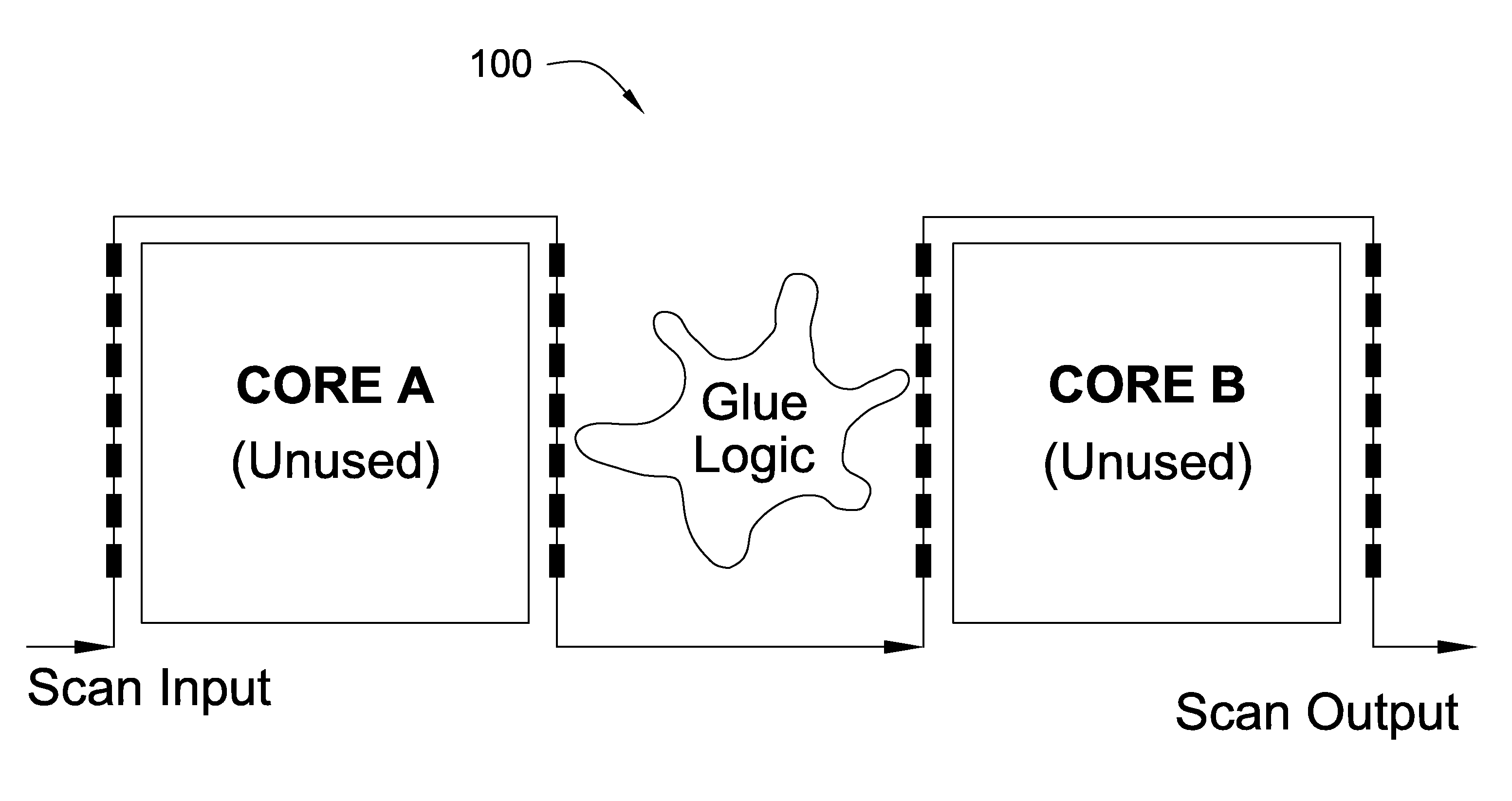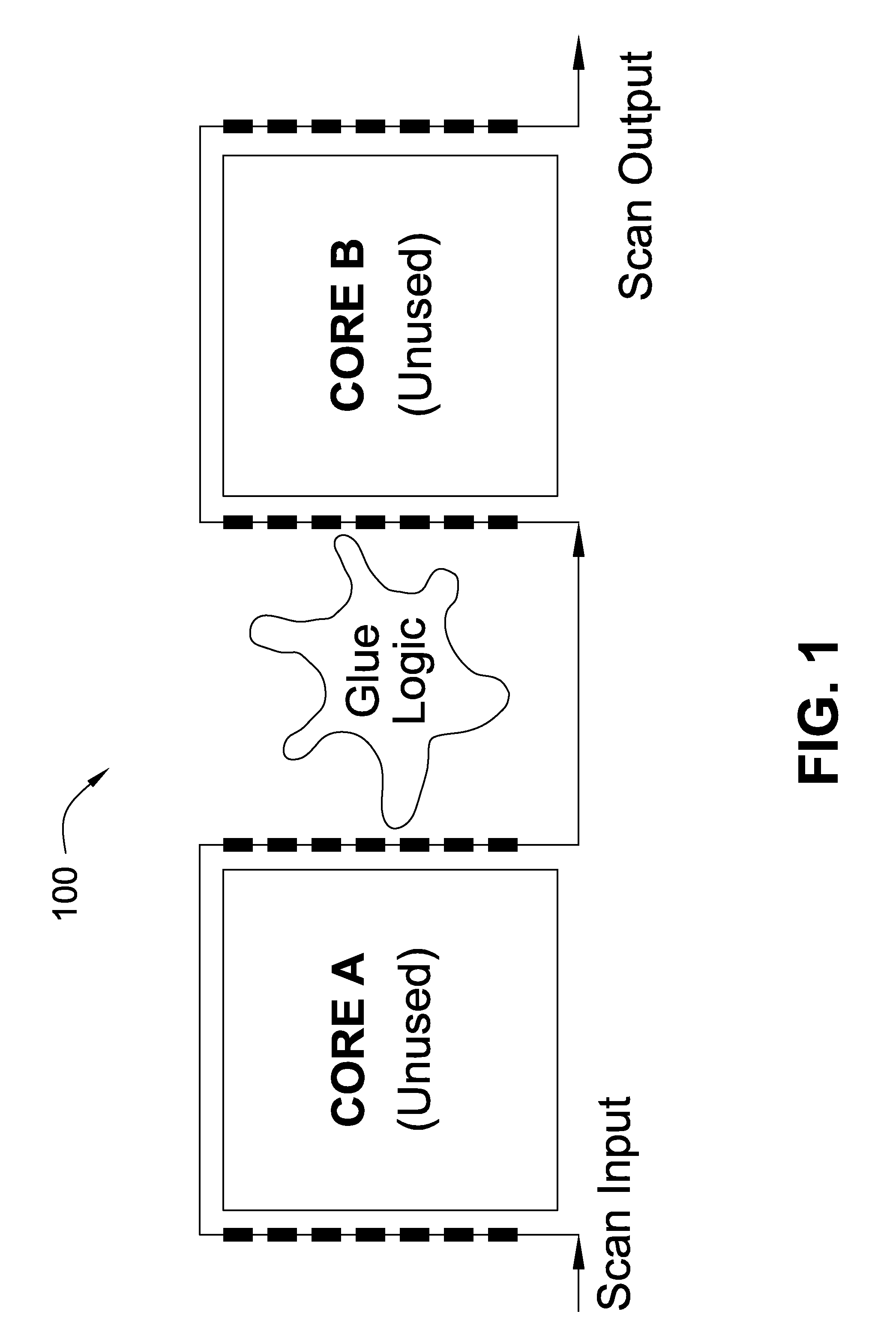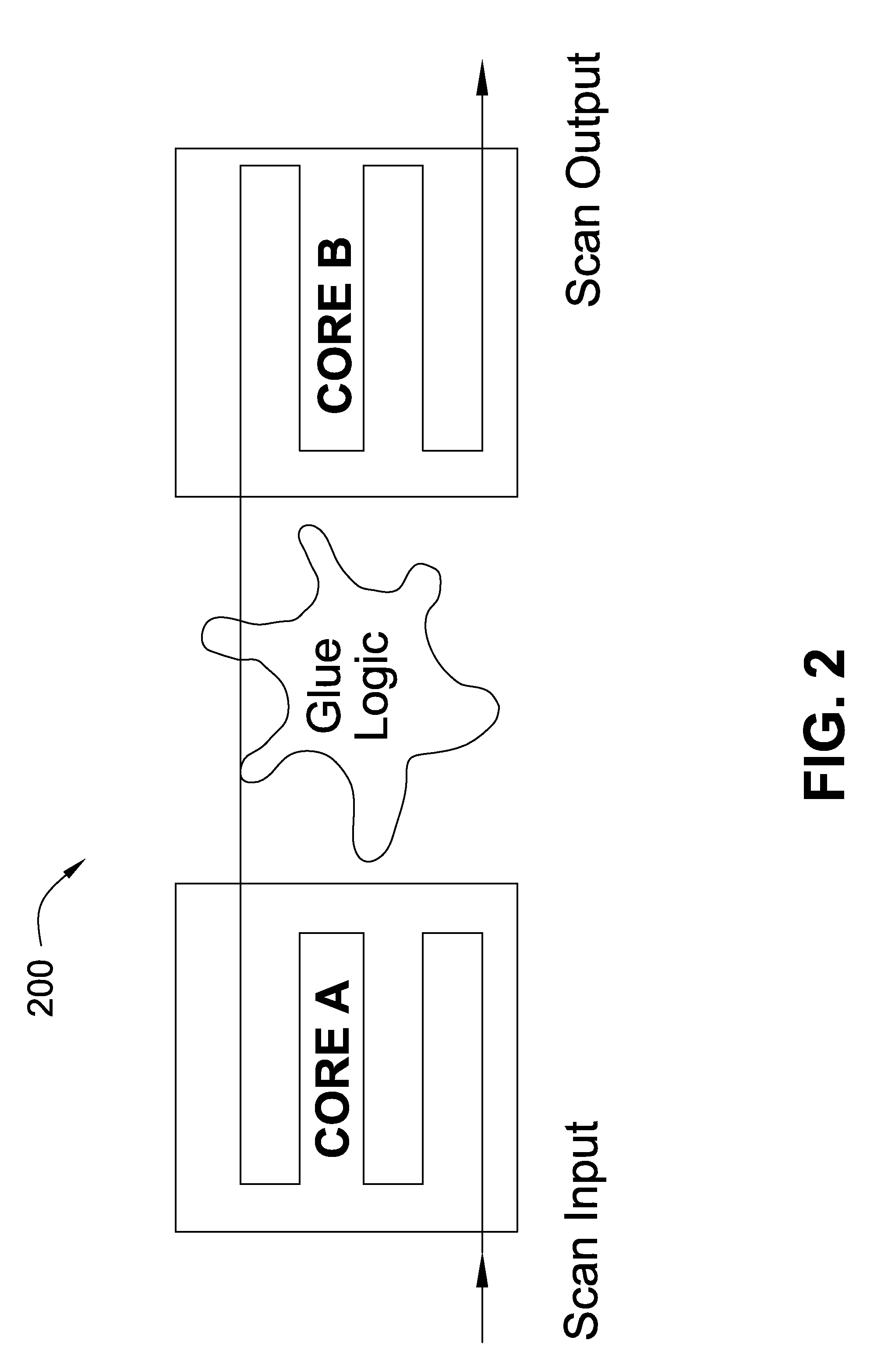DFT TECHNIQUES TO REDUCE TEST TIME AND POWER FOR SoCs
a technology of socs and test applications, applied in the field of digital integrated circuits, can solve the problems of destroying the benefits of top-level testing, wasting test time and test power, and high cost of residual scan mod
- Summary
- Abstract
- Description
- Claims
- Application Information
AI Technical Summary
Problems solved by technology
Method used
Image
Examples
Embodiment Construction
[0017]In the following detailed description of the embodiments of the present subject matter, reference is made to the accompanying drawings that form a part hereof, and in which are shown by way of illustration specific embodiments in which the present subject matter may be practiced. These embodiments are described in sufficient detail to enable those skilled in the art to practice the present subject matter, and it is to be understood that other embodiments may be utilized and that changes may be made without departing from the scope of the present present subject matter. The following detailed description is, therefore, not to be taken in a limiting sense, and the scope of the present present subject matter is defined only by the appended claims.
[0018]As SoCs are becoming increasingly complex, hierarchical solutions such as DFT are suited for integration of the cores. In hierarchical scan design architecture such as divide-and-conquer scan, testing is done in two phases. In the ...
PUM
 Login to View More
Login to View More Abstract
Description
Claims
Application Information
 Login to View More
Login to View More - R&D
- Intellectual Property
- Life Sciences
- Materials
- Tech Scout
- Unparalleled Data Quality
- Higher Quality Content
- 60% Fewer Hallucinations
Browse by: Latest US Patents, China's latest patents, Technical Efficacy Thesaurus, Application Domain, Technology Topic, Popular Technical Reports.
© 2025 PatSnap. All rights reserved.Legal|Privacy policy|Modern Slavery Act Transparency Statement|Sitemap|About US| Contact US: help@patsnap.com



